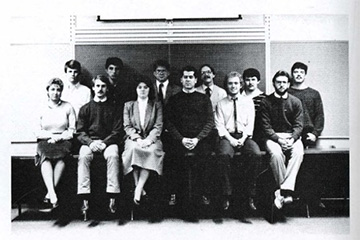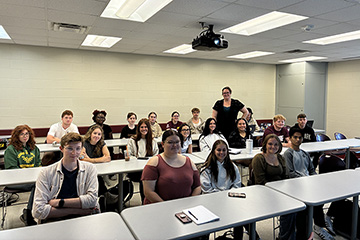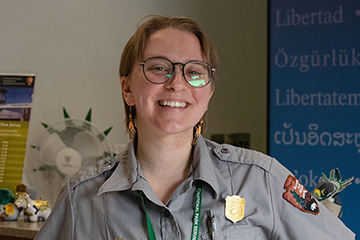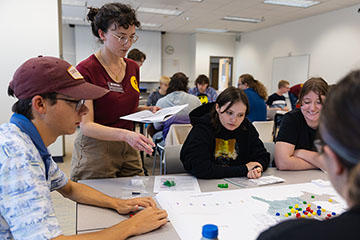International biosphere program adds CMU Biological Station
UNESCO designation creates new opportunities for research and education
Its name means "middle place" or "middle ground," but the newly designated Obtawaing Biosphere Reserve places Central Michigan University on an elite list of international sites dedicated to the study of sustainable development.
The United Nations Educational, Scientific and Cultural Organization, or UNESCO, formally established the reserve in Northern Michigan in September after three years of review and planning. It encompasses CMU's Biological Station on Beaver Island.
Biology faculty member and Institute for Great Lakes Research Director Don Uzarski was at the table to help make it happen.
He said the designation gives CMU world recognition and opportunities for "collaboration, funding, research — you name it."
UNESCO is also the organization that identifies World Heritage Sites for protection, including Yellowstone National Park, China's Great Wall and Australia's Great Barrier Reef. Uzarski said its biosphere reserve program recognizes that "people are a part
of the landscape" and there's not a dichotomy between protecting the environment and economic development — we need to do both.
"We're essentially finding smart ways to use the environment and protect the environment at the same time," he said of the UNESCO program, which has designated 686 biosphere reserves in 122 countries.
The new Obtawaing reserve also takes in Sleeping Bear Dunes National Lakeshore, Wilderness State Park and a University of Michigan Biological Station with land near Pellston and in the Upper Peninsula. It's not a single area but several parcels totaling about 96 square miles surrounded by buffer zones comprising 11 counties roughly centered on the Straits of Mackinac.
Being in or near the reserve doesn't restrict human activity.
"This comes with zero regulation," Uzarski said. Instead, it's an area for study, focused on sustainability, culture and human reliance on natural systems — such as how coastal wetlands clean water entering the Great Lakes.
"We absolutely rely on these regions," Uzarski said. "It would take an enormous amount of money to replace what they're doing."
UNESCO first designated the U-M Biological Station a reserve in 1979. It was essentially an unpopulated natural area. The current expansion stems from the program's evolution to factor in human populations, along with a desire for more scientific partners such as CMU.
Scientific and educational partners are key aspects of biosphere reserves, and that's where CMU's Great Lakes research leadership comes in.
As UNESCO put it in its program summary, the CMU Biological Station "hosts undergraduate university classes on biological sciences, provides a base of operation for researchers and provides public education and outreach. Central Michigan University researchers affiliated with the Institute for Great Lakes Research conduct research throughout the Great Lakes. CMUBS researchers are integral in coordinating unified, international efforts to conserve Great Lakes coastal habitats through the Lakes Coastal Wetland Monitoring Program."
Uzarski notes that "most of the research in the IGLR has something to do with human interaction in the Great Lakes ecosystems."
He also credits partners in Michigan for their work to establish the expanded reserve, including Knute Nadelhoffer, Professor Emeritus and former director of UMBS at the University of Michigan as well as Jon Allan in U-M's School for the Environment and Sustainability. "We certainly didn't do this on our own," Uzarski said.
Instead, the partners came together for a shared mission: "It's about connecting people with nature, with sustainable development, and using science to do that."




